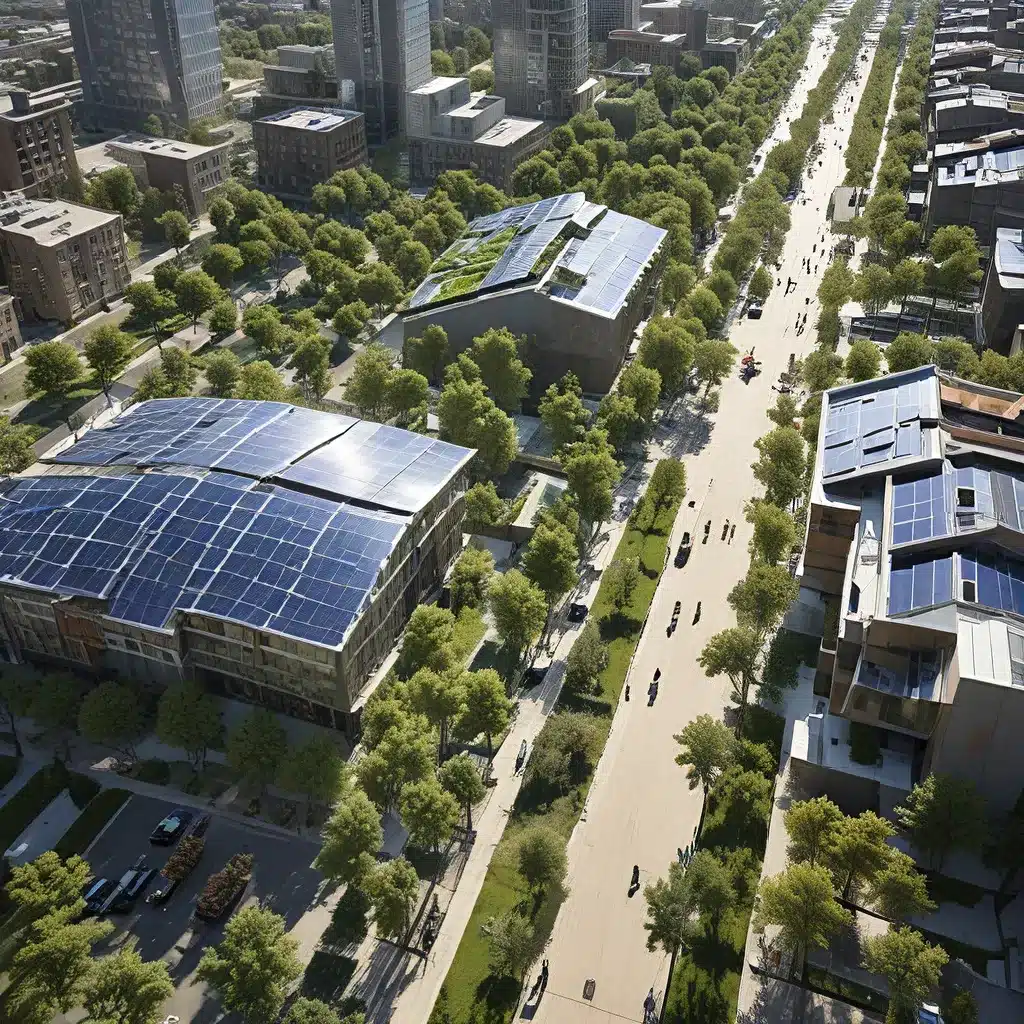
Ah, the promise of renewable energy – a future where our cities hum with the clean, sustainable power of the sun, wind, and water. As someone deeply passionate about environmental sustainability, I’ve been following the “renewable urbanism” movement with great excitement. The idea of weaving renewable energy solutions into the very fabric of our urban landscapes is not only captivating, but also crucial for creating the kind of future we all want to inhabit.
Embracing the Renewable Revolution
Let me tell you, the renewable energy revolution is in full swing, and cities around the world are jumping on board. According to the source information, over 100 cities worldwide are already generating the majority of their energy from renewable sources, usually a combination of wind, solar, hydro, and biomass. Places like Seattle, Washington and Prince George, British Columbia have made the switch, ditching fossil fuels for a cleaner, greener future.
And it’s not just about electricity generation – cities are getting creative with incorporating renewable energy into their very infrastructure. In Reykjavik, Iceland, they’re planning to convert their entire public vehicle fleet to be fossil fuel-free, likely transitioning to a fleet of electric vehicles. This, of course, requires the development of charging stations and electric-friendly roads and parking garages, but the potential savings are staggering. Experts estimate that a fleet of just 50 vehicles can save a city $320,000 a year on energy costs and reduced traffic emissions.
Innovative Renewable Solutions for Urban Spaces
But the renewable energy integration in cities goes far beyond just electric vehicles and solar panels. Innovative solutions are popping up everywhere, and I find them absolutely fascinating. Let’s take a look at a few:
Green Roofs: Roofs covered in living foliage and plant matter are becoming increasingly popular in urban areas. Not only do they help reduce the dreaded “urban heat island effect,” but they also keep buildings cooled and reduce carbon emissions. These green roofs are widely seen as the future of sustainable urban development.
Horizontal Elevators: Some cities are even experimenting with “horizontal elevators” – essentially monorail systems that allow for quick, efficient mobility across a city. These innovative transportation solutions can help reduce downtown congestion and the resulting energy waste and emissions.
Automated Vacuum Collection Systems (AVACS): Cities in Norway, France, and China are already utilizing these advanced waste management systems, which have proven to be highly efficient in eliminating the pollution created by traditional garbage truck emissions. With AVACS, cities can operate with greater levels of cleanliness while applying taxpayer money to more sustainable sanitation techniques.
Off-Grid Housing: Developers are increasingly exploring off-grid housing options, which are built without relying on mainstream electricity systems. Instead, they utilize a combination of rooftop solar, wind power, and other renewable energy sources. This not only cuts costs and inefficiencies, but it also allows for true self-sustainability at the community level.
The Path Towards a Renewable Future
The renewable urbanism movement is gaining momentum, and it’s not just cities leading the charge. Businesses, individuals, and governments are all getting involved, pouring time, money, and effort into creating a cleaner, greener future.
In nearly every country around the globe, regulations and incentives are being put in place to steer development towards renewable energy solutions. And the public is responding, with people eagerly supporting these practices through voting, donations, and more.
Of course, the path to a truly zero-carbon city is not an easy one, and there’s still a lot of work to be done. But by integrating alternative energy into city planning and development, we’re taking crucial steps towards a cleaner, more sustainable world.
As I reflect on the incredible progress being made, I can’t help but feel a sense of optimism and wonder. The innovations I’ve described are just the tip of the iceberg, and I can’t wait to see what the future holds. Who knows what other renewable energy marvels are waiting to be discovered and implemented in our urban landscapes?
One thing is certain: by embracing the power of renewable urbanism, we’re not just building a greener future, but a more livable, equitable, and resilient one for all. And that, my friends, is a future worth fighting for.
So, let’s keep exploring, experimenting, and pushing the boundaries of what’s possible. The path to a renewable, sustainable city may be long, but with each innovative solution, we’re inching ever closer to creating the kind of world we all deserve. Shall we get to work?

